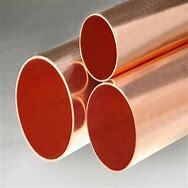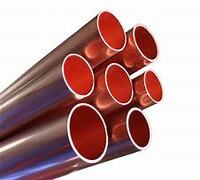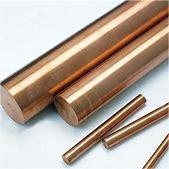1. Introduction
Just 48 hours ago, a major recycling industry report revealed that global demand for clean, stripped copper scrap has surged by 18% in Q2 2024—driven by electric vehicle and renewable energy infrastructure projects. With copper prices hovering near $9,000 per metric ton, knowing how to properly strip copper wire isn’t just useful—it’s potentially profitable.

Whether you’re salvaging from old appliances, construction sites, or HVAC systems, stripping copper wire correctly maximizes your return and ensures safety. This guide covers everything from identifying copper types—including copper rod, copper strip, and aircon copper pipe—to choosing the best stripping method without damaging the metal or violating environmental laws.
2. Why Stripping Copper Wire Matters
Unstripped copper wire (with insulation) fetches far less at scrap yards—often 30–50% less than bare, clean copper. Moreover, many recyclers now refuse burnt or contaminated wire due to toxic fumes from PVC insulation.
Stripping also helps you sort copper grades accurately. For example, thick THHN wire contains high-purity copper, while motor windings may include copper alloy strip or beryllium copper strip—each with different values.
3. Identifying Your Copper Type
Before stripping, know what you’re working with. Common copper forms include:
- Copper rod: Solid, cylindrical conductors often used in grounding or bus bars.
- Copper strip: Flat, thin pieces like 1mm copper strip or copper earth strip 25x3mm used in earthing systems.
- Copper tubing: Includes 15mm copper pipe or 22mm copper tube from plumbing or AC units (e.g., aircon copper pipe).
- Copper wire: Insulated strands found in cables, motors, or building wiring.

Look for markings: ‘ETP’ (electrolytic tough pitch) indicates high-purity copper. Avoid aluminum-clad or copper-clad steel ground rod materials—they’re not pure copper and yield lower scrap value.
4. Tools for Stripping Copper Wire
4.1. Manual Wire Strippers
Ideal for small jobs or delicate wires. Use adjustable strippers to avoid nicking the copper. Great for stripping copper wire from electronics or household cables.
4.2. Automatic Wire Stripping Machines
For larger volumes (e.g., stripping wire for scrap businesses), invest in a bench-top stripper. These handle everything from thin copper strip wire to thick 2/0 gauge cables quickly and cleanly.

4.3. Utility Knives and Razor Blades
Use with caution! Score the insulation gently, then peel it back. Never cut toward your hand. This method works for flat copper strips or copper tape for snails (used in gardening), but isn’t efficient for long runs.
5. Step-by-Step: Best Way to Strip Copper Wire
5.1. Sort and Clean
Separate copper by type: bare bright (highest value), #1 copper (clean insulated wire), and #2 copper (tarnished or mixed). Remove staples, tape, or plastic connectors.
5.2. Choose Your Method
- For short lengths: Use manual strippers.
- For long copper wire: Feed through an automatic stripper or use the ‘pull-and-peel’ technique with pliers.
- For thick cables: Slit the outer jacket with a knife, then strip individual conductors.
5.3. Avoid Burning Copper Wire for Scrap
Burning insulation releases dioxins and is illegal in most U.S. states and EU countries. Scrap yards test for residue—burnt wire is often rejected or heavily discounted.
6. Common Mistakes to Avoid
- Stripping copper cable too aggressively and scratching the metal (reduces value).
- Mixing copper with copper-clad steel earth rod or copper bonded ground rod materials (these contain steel cores and aren’t pure copper).
- Ignoring local regulations on scrap metal sales—many states require ID and documentation.
7. Maximizing Profit: What’s Worth Stripping?
Focus on high-value sources:
- HVAC systems: Air conditioner copper pipe price remains strong; recover 15mm copper tube or 3/4 copper pipe from old units.
- Electrical panels: Copper bus bar or flexible copper bar components.
- Industrial motors: May contain beryllium copper strip or nickel plated copper strip—check with your recycler.
Avoid low-yield items like phone cords or Ethernet cables—they contain tiny amounts of copper and aren’t worth the labor.
8. Where to Sell Stripped Copper
Search for ‘copper strip near me’ or ‘copper bars for sale’ to locate certified recyclers. Compare copper rod price and copper strip price across vendors—prices vary daily based on LME (London Metal Exchange) rates.
Pro tip: Ask if they accept copper round bar or copper ingot—some shops pay premium rates for clean, sorted forms like 1oz copper or cu bars.
9. Conclusion
Stripping copper wire the right way boosts your scrap earnings, protects the environment, and keeps you compliant with recycling laws. Whether you’re handling copper rod for welding, stripping copper wire for scrap, or salvaging aircon copper tube, use the right tools, avoid burning, and always sort by purity. With copper demand rising, your stripped copper could be worth more today than ever before.
Our Website founded on October 17, 2012, is a high-tech enterprise committed to the research and development, production, processing, sales and technical services of ceramic relative materials such as How. Our products includes but not limited to Boron Carbide Ceramic Products, Boron Nitride Ceramic Products, Silicon Carbide Ceramic Products, Silicon Nitride Ceramic Products, Zirconium Dioxide Ceramic Products, etc. If you are interested, please feel free to contact us.

